Lung megakaryocytes engulf inhaled airborne particles to promote intrapulmonary inflammation and extrapulmonary distribution
- PMID: 39191805
- PMCID: PMC11349891
- DOI: 10.1038/s41467-024-51686-y
Lung megakaryocytes engulf inhaled airborne particles to promote intrapulmonary inflammation and extrapulmonary distribution
Abstract
Many lung immune cells are known to respond to inhaled particulate matter. However, current known responses cannot explain how particles induce thrombosis in the lung and how they translocate to distant organs. Here, we demonstrate that lung megakaryocytes (MKs) in the alveolar and interstitial regions display location-determined characteristics and act as crucial responders to inhaled particles. They move rapidly to engulf particles and become activated with upregulation in inflammatory responses and thrombopoiesis. Comprehensive in vivo, in vitro and ex vivo results unraveled that MKs were involved in particle-induced lung damages and shed particle-containing platelets into blood circulation. Moreover, MK-derived platelets exhibited faster clotting, stronger adhesion than normal resting platelets, and inherited the engulfed particles from parent MKs to assist in extrapulmonary particle transportation. Our findings collectively highlight that the specific responses of MKs towards inhaled particles and their roles in facilitating the translocation of particles from the lungs to extrapulmonary organs for clearance.
© 2024. The Author(s).
Conflict of interest statement
The authors declare no competing interests.
Figures
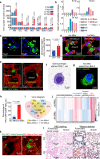
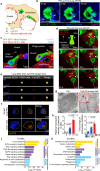

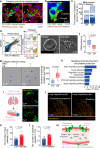
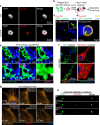
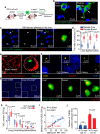

Similar articles
-
OP9 bone marrow stroma cells differentiate into megakaryocytes and platelets.PLoS One. 2013;8(3):e58123. doi: 10.1371/journal.pone.0058123. Epub 2013 Mar 1. PLoS One. 2013. PMID: 23469264 Free PMC article.
-
Airborne particulate matters induce thrombopoiesis from megakaryocytes through regulating mitochondrial oxidative phosphorylation.Part Fibre Toxicol. 2021 May 13;18(1):19. doi: 10.1186/s12989-021-00411-4. Part Fibre Toxicol. 2021. PMID: 33985555 Free PMC article.
-
CXCR4high megakaryocytes regulate host-defense immunity against bacterial pathogens.Elife. 2022 Jul 29;11:e78662. doi: 10.7554/eLife.78662. Elife. 2022. PMID: 35904250 Free PMC article.
-
The heterogeneity of megakaryocytes and platelets and implications for ex vivo platelet generation.Stem Cells Transl Med. 2021 Dec;10(12):1614-1620. doi: 10.1002/sctm.21-0264. Epub 2021 Sep 18. Stem Cells Transl Med. 2021. PMID: 34536061 Free PMC article. Review.
-
A brief review of the biology of megakaryocytes and platelets and their role in thrombosis associated with particulate air pollution.Toxicol Ind Health. 2021 Mar;37(3):164-172. doi: 10.1177/0748233720986352. Epub 2021 Jan 28. Toxicol Ind Health. 2021. PMID: 33506746 Review.
Cited by
-
Microbial Dysbiosis in the Lung and Gut in Response to Inhalable Particulate Matters in Pneumoconiosis Patients and Animals.Environ Sci Technol. 2025 Jun 10;59(22):10826-10840. doi: 10.1021/acs.est.5c00798. Epub 2025 May 29. Environ Sci Technol. 2025. PMID: 40439217 Free PMC article.
-
Immune and Inflammatory Properties of Megakaryocytes.Cells. 2025 Jul 10;14(14):1053. doi: 10.3390/cells14141053. Cells. 2025. PMID: 40710306 Free PMC article. Review.
-
Synergistic Toxicity of Fine Particulate Matter and Ozone and Their Underlying Mechanisms.Toxics. 2025 Mar 24;13(4):236. doi: 10.3390/toxics13040236. Toxics. 2025. PMID: 40278552 Free PMC article. Review.
-
Platelets as drivers of immunothrombosis in rheumatic diseases.Nat Rev Rheumatol. 2025 Aug;21(8):478-493. doi: 10.1038/s41584-025-01276-z. Epub 2025 Jul 7. Nat Rev Rheumatol. 2025. PMID: 40624395 Review.
References
MeSH terms
Substances
Grants and funding
- 2022042/Youth Innovation Promotion Association of the Chinese Academy of Sciences (Youth Innovation Promotion Association CAS)
- 22076210/National Natural Science Foundation of China (National Science Foundation of China)
- 22150006/National Natural Science Foundation of China (National Science Foundation of China)
LinkOut - more resources
Full Text Sources

